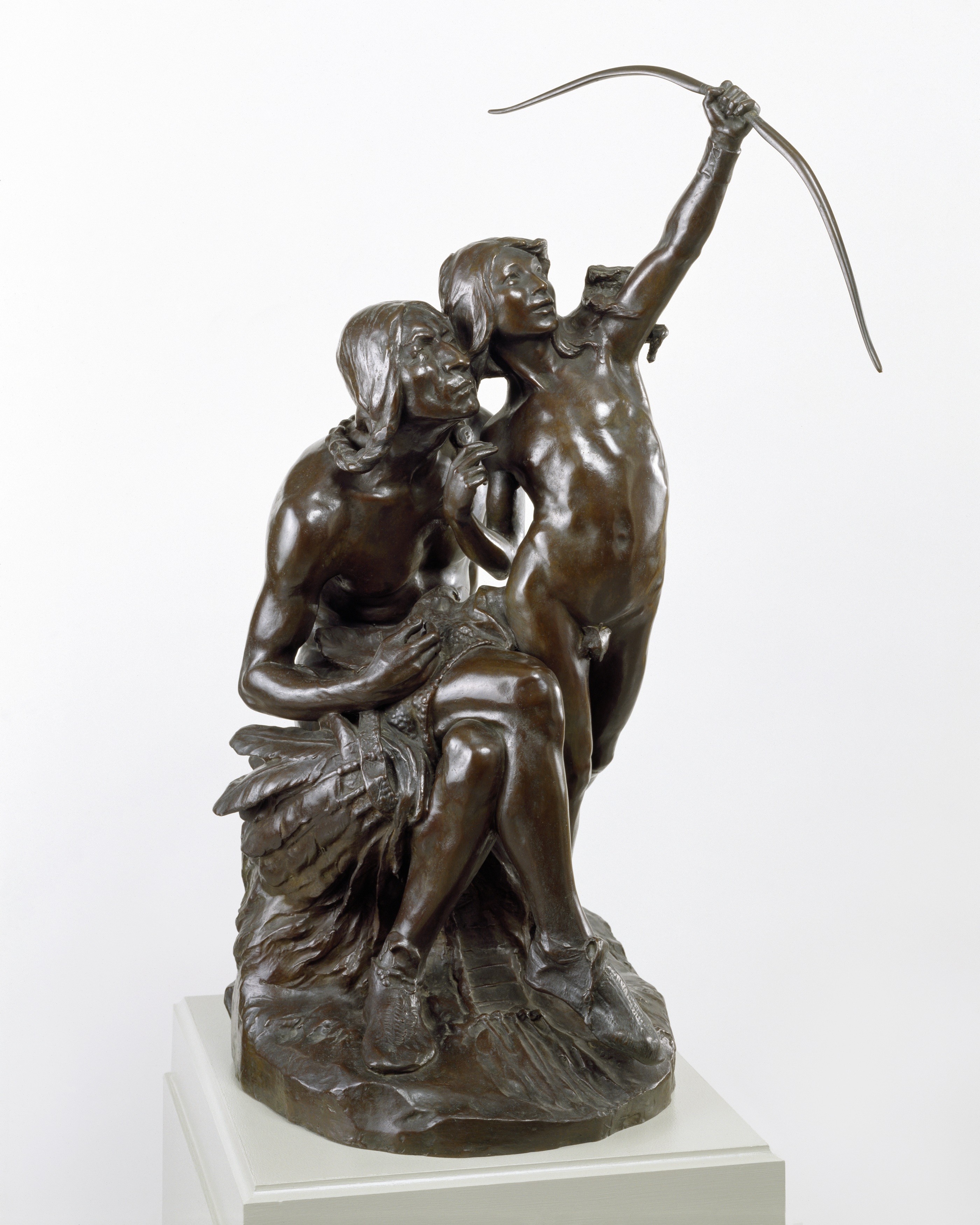As Native American culture started to disappear in the late 19th century, American artists and photographers began to document it for posterity, resulting in art works ranging from realistic to romantic.
“From Alaska to the Mountain Peaks of Central Mexico: Depicting Native American Life in the Late Nineteenth Century,” an exhibition running through Aug. 4 at The Fralin Museum of Art at the University of Virginia, considers the ways in which photographers and artists represented Native American life at a time when the culture of these indigenous peoples was rapidly fading.
Photographers documented what they believed to be a “dying” culture, while painters and sculptors romanticized the American Indian in a desire to portray an essential part of American history.
The exhibition features a collection of photographs donated to the University of Virginia by Lady Nancy Astor, as well as several other important loaned works, including a sculpture by Hermon Atkins MacNeil from the Chrysler Museum of Art, a ceramic glazed vase by Karl Kappes from the Virginia Museum of Fine Arts, and popular dime novels from U.Va.’s Albert and Shirley Small Special Collections Library.
Photographers and ethnologists working for the Bureau of American Ethnology during field trips to tribal areas took the majority of photographs. Prints were later obtained from the bureau to decorate the Grill Room at New York's Hotel Astor.
“The Grill Room was an unusual, if not unique, combination of restaurant and ethnographic museum,” said Diane Boucher, who co-curated the exhibition with Mary Jo Ayers, the museum’s adjunct curator of Native American Art.
“When the Grill Room opened in 1904, the photographs were set into the wooden paneling and displayed alongside artifacts representing eight quasi-scientific linguistic groups of American Indian tribes. The photographs reinforced the narrative by portraying everyday life, family groups, formal portraits and the rituals of the tribes.”
After the Grill Room closed in 1937, both the artifacts and photographs were donated to the University by Lady Nancy Astor, and later accessioned by the museum. Some of these artifacts were also given to the University, and a small selection is on display in the museum’s Object Study Gallery.
The Grill Room photographs show a desire to accurately capture disappearing cultures. In contrast, MacNeil’s “Sun Vow” sculpture from 1899 exemplifies concurrent artists’ desire to romanticize Native American life.
“MacNeil combined his interest in classical European sculpture – which can be seen in the boy’s graceful, twisting torso – with anthropological accuracy captured in the careful rendering of the headdress and moccasins of the old warrior,” Ayers said.
At the same time, dime novels usually depicted stereotypically “savage” Indians – who were often the villains in stories of white settlers on the frontier – disregarding entirely the Indians’ perspective.
“At best, a Native American character might be deemed ‘noble’ if he assisted white settlers – though he would likely be short-lived,” Boucher said. “The noble Indian always dies or disappears before the end of the novel, signifying that there was no place for the Indian in the new America.”
With photographs, sculpture, vase and novels on view together, the exhibition offers a broad view of American Indian life at the end of the 19th century, giving visitors a glimpse of a disappearing culture, both realistic and as imagined in popular culture.
This exhibition is made possible through the support of Arts$, Albemarle Magazine and Ivy Publications LLC's Charlottesville Welcome Book. The Fralin Museum of Art’s programming is made possible by the support of The Joseph and Robert Cornell Memorial Foundation.
In addition to the Native American exhibit, The Fralin Museum of Art’s summer programming includes “Ansel Adams: A Legacy,” “Looking at the New West: Contemporary Landscape Photography” and “Frenemies: Animals in Art.” Remaining on view this summer is “Becoming the Butterfly: Portraits of James McNeill Whistler.”
The Fralin Museum of Art, located at 155 Rugby Road, one block from the Rotunda, is open Tuesdays through Sundays from noon to 5 p.m. Admission is free.
Media Contact
Article Information
June 19, 2013
/content/new-exhibit-fralin-museum-art-showcases-native-american-culture

